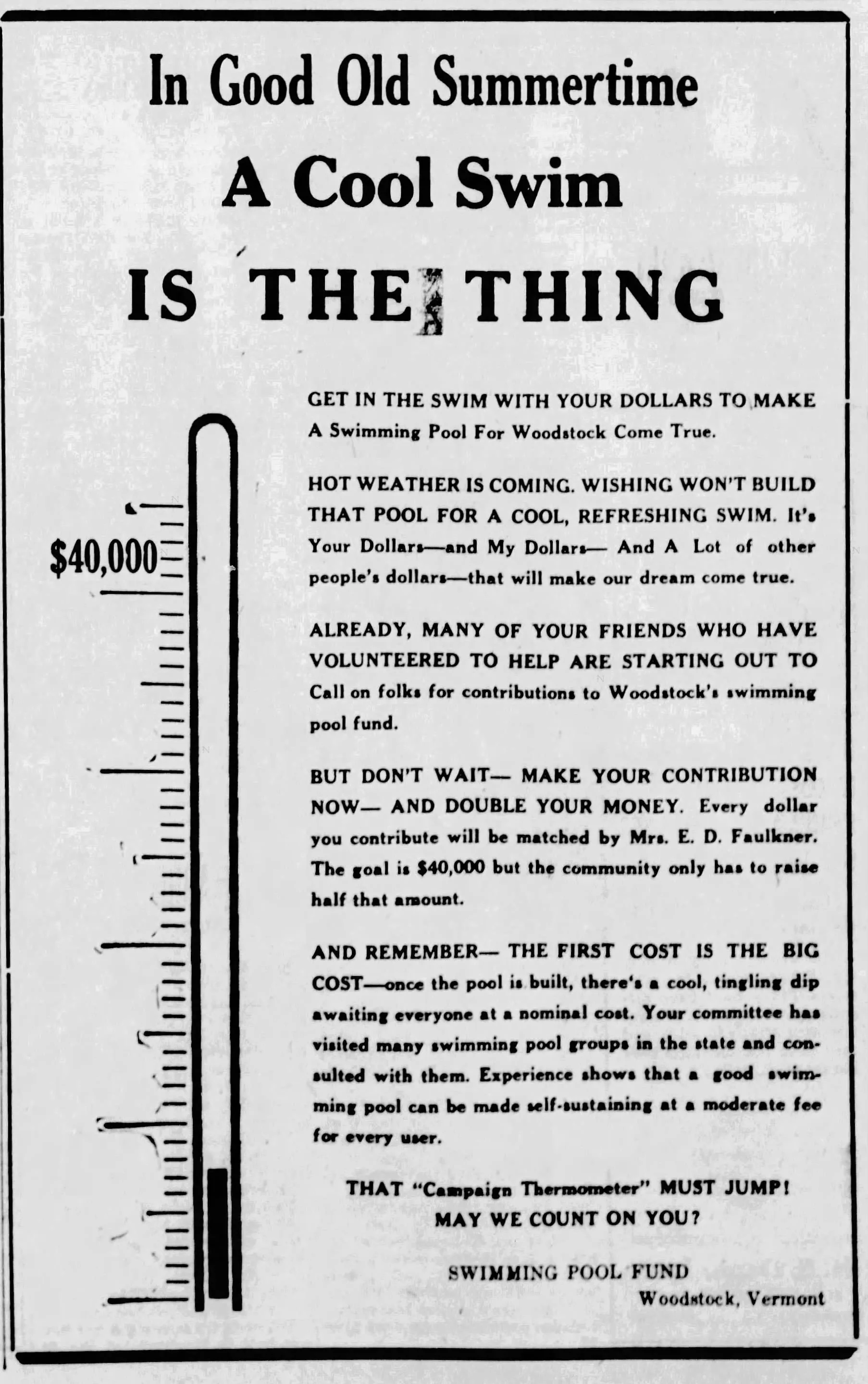Pooling Funds for the Community
The Recreation Center’s first pool, which was constructed in 1957.
By Jennie Shurtleff
In 1942, Woodstock’s school children were invited to participate in an essay contest on how to improve their town. The top three entries—written by Mary Maynes, Maureen Maynes, and Ellen Austin—all included one shared vision: the need for a community swimming pool.
As it turned out, the idea was already gaining momentum. Two years earlier, in 1940, the Woodstock Rotary Club had launched a Swimming Pool Fund with an initial donation of $500. Over the next decade, the Rotary Club remained a key advocate, regularly contributing to the fund—often through proceeds from their popular Rotary Carnival, as shown in the Swimming Pool Building Committee’s “A Report of Progress.”
While the Rotary Club led the charge, they weren’t alone. In 1948, other community members joined the effort, launching a town-wide fundraising campaign to raise the $40,000 needed to make the pool a reality. A “Campaign Thermometer” tracked the progress, and in a generous show of support, Mrs. E.D. Faulkner pledged to match every dollar raised—meaning the community, including the Rotary Club, would only need to come up with half the total amount. Still, $20,000 was no small sum in the 1940s, especially with memories of the Great Depression still fresh and many service members just returning home and starting new lives.
Marianne Faulkner was one of Woodstock’s major benefactors. In addition to creating the Woodstock Recreation Center for the town’s children, she established the Homestead for the elderly, and Faulkner Park as a place for people to go for quiet, peaceful walks.
Good things often take time—and, in this case, perseverance paid off. By 1957, Woodstock was finally getting its pool. In November of that year, the cement had been poured, and plans were in place to keep water in the pool over the winter to protect the new concrete from cracking in the cold.
The finished pool featured a shallow section for younger swimmers and a nine-foot-deep end for diving. The Woodstock Recreation Center described the project as “a wonderful thing for the Center,” and they emphasized that it complemented Mrs. Faulkner’s earlier gift of the Recreation Center itself.
By June 1958, the pool was ready for its first swimmers. It opened with swimming lessons and open swim hours. Two months later, the official dedication took place in August before a crowd of about 300 people. The celebration included speeches, a comedic diving exhibition featuring stunts like the Closed Jack-knife, the Sleeper, the Cannonball Express, and the Watermelon (performed by Donald Doubleday and David Schwartzman), lifesaving demonstrations, awards for swim students, and even a dive off the board by three-year-old Duke Eaton.
While the new pool was certainly a cause for celebration, it represented something even deeper: a community coming together with determination, generosity, and shared purpose to create something meaningful—an investment in joy, health, and connection for generations to come.




